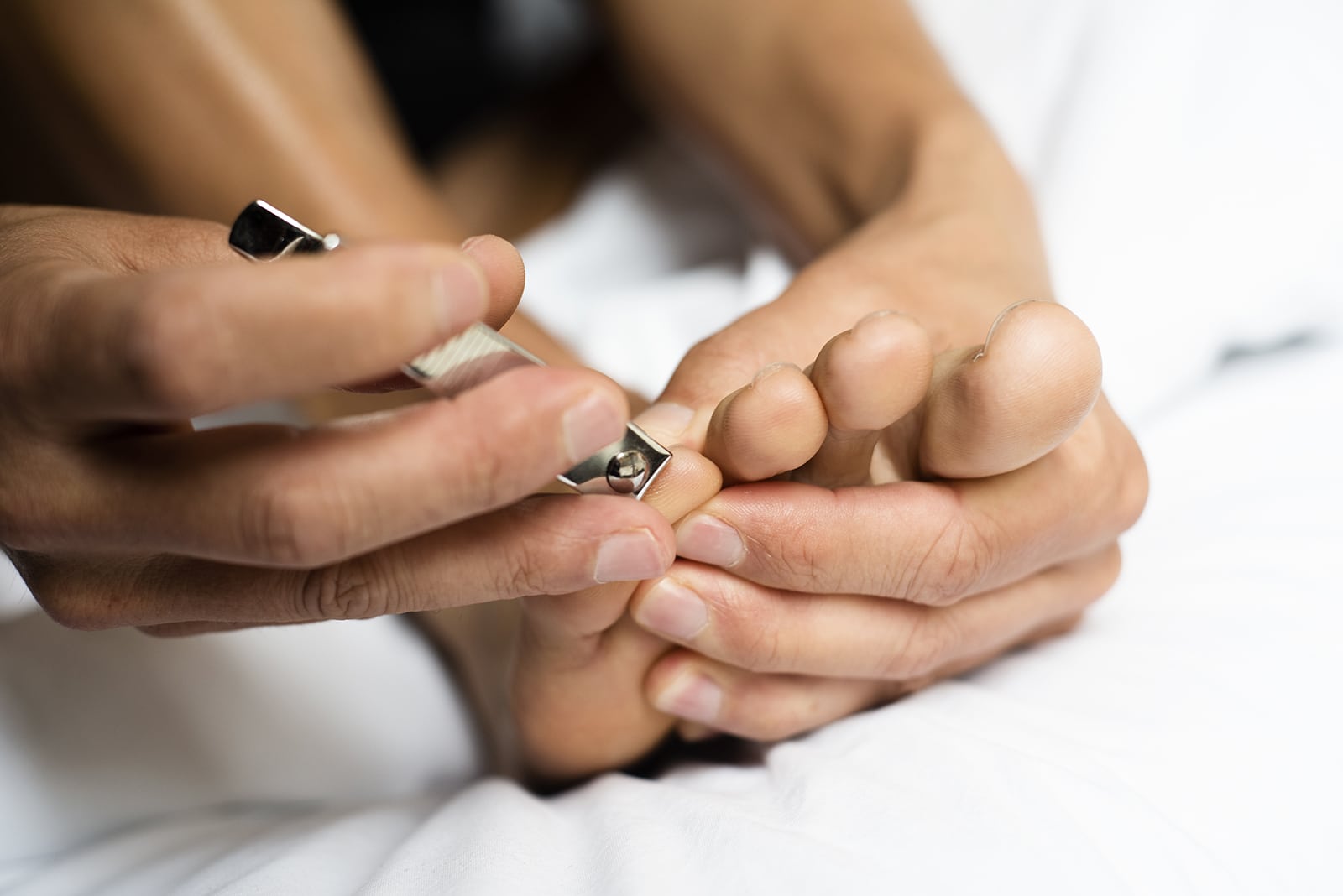The Quick Guide to Caring for Diabetic Feet
Uncontrolled diabetes is the leading cause of foot wounds, peripheral neuropathy, and lower limb amputations, and is also linked to serious (and potentially fatal) health complications such as heart disease, kidney disease, Alzheimer’s, blindness, and others.
But those who take the time to make a few small adjustments to their lifestyle can dramatically reduce their risk of complications and live long, healthy, unencumbered lives. And regular, attentive diabetic foot care is one of the most important aspects of this process.
In this blog, we’ll give you a quick look at some of the most important tips for caring for diabetic feet. But the first one here is the most important.

If You Have Diabetes and Haven’t Had Your Feet Checked by a Podiatrist, Don’t Wait Any Longer
Regular diabetic foot exams, performed by a foot and ankle specialist, are a critical part of keeping your feet healthy and free from neuropathy, wounds, and other problems—even if you currently feel fine.
One of the key things you have to understand with diabetic foot complications like peripheral neuropathy or peripheral artery disease is that if you can feel the symptoms, it may already be too late to reverse much of the damage.
A checkup with a podiatrist like Dr. Timson allows us to test for the early warning signs of these diseases and provide you with a customized preventative care plan.
For the most part, we recommend all people with diabetes get their feet professionally checked once per year. More frequent screenings may be necessary for those with a history of foot problems.
Examine Your Feet at Home Every Day
Think of it this way: if you don’t brush and floss your teeth, visiting the dentist every six months isn’t going to save you from tooth decay.
Similarly, because we may only see you one or two times per year, your daily foot checks are critically important.
Remember that, with diabetes, the nerves in your feet may be compromised and unable to tell your brain when you have a cut or injury. If you go a few days without checking your feet, these injuries can fester and become worse, or even infected. And that may put you down a very dangerous path.
So take five minutes out of your day—every day—to make a thorough inspection. In addition to checking for cuts, bruises, corns, cracks, and other visual problems, feel your feet with your hands and see if you notice any bumps or changes in temperature.
Any problems or changes should be monitored closely, and you should alert us if these problems are not getting better (or getting worse).
Manage Your Blood Sugar (and Overall Health)
Really, this is at the heart of all diabetic complications, including those that affect the feet and ankles. Too much sugar in the blood is what poisons nerves, restricts circulation, causes tissue inflammation, suppresses immune function—all those things that make ulcers, infections, and amputations more likely.
Talk to your general practitioner, if you haven’t already, about how you can better manage your condition. This will likely include, at minimum, regular blood sugar testing, carefully managing your diet, and getting plenty of exercise.
Maintaining a healthy body weight is part of this as well, along with quitting smoking (if you’re a smoker) and limiting your alcohol intake. These factors can all work together to depress circulation, damage nerves, and put more damaging force on your feet and ankles.
Protect and Support Your Feet
For most people with diabetes, we generally recommend that you don’t go barefoot—even indoors. And a good pair of shoes won’t just protect your feet from cuts, bruises, and skin infections. It’ll also support and cushion your feet properly, redirect force and friction away from sensitive areas, and reduce your risk of all sorts of problems—bunions, corns, hammertoes, etc.
Depending on your level of risk, this may take different forms. For many people, simply choosing an appropriate, well-fitting pair of shoes off the rack at the store will be sufficient. For others, we recommend diabetic shoes.
No, this doesn’t mean “ugly.” Diabetic (also known as therapeutic) shoes come in fashionable shapes and sizes, too. It just means that they have a little extra depth to accommodate orthotics more easily, and other handy features ideal for the specialized needs of diabetic feet—seamless interiors, for example.
You may also wish to purchase diabetic socks. Again, to the outside world they look like normal socks, but they are designed with diabetic feet in mind—no seams, padded soles, moisture-wicking fabric, etc.
Wash Your Feet Regularly—And Safely
Good hygiene helps keep out surface-level infection and other problems such as warts, athlete’s foot, fungal toenails, etc.
Wash your feet at least once per day. Use mild soap and lukewarm water. Always test the water temperature with your elbow or thermometer to make sure it isn’t too hot—especially if you suffer some sensation loss in your feet.
When you’re finished, make sure you dry your feet thoroughly. Once dry, apply a good moisturizer everywhere except between the toes. (Diabetes is associated with dry skin, so regularly moisturizing helps prevent problems like heel fissures.)

Trim Your Toenails Properly
It might seem odd to suggest this. After all, who doesn’t know how to cut their own toenails? But actually, there’s a pretty specific way to do it to minimize your risk of problems like ingrown toenails or fungal infections.
Step one, keep them neatly trimmed—but don’t go too short. Leaving them about even with the toe tips is ideal.
Step two, cut relatively straight across. Don’t curve in the corners like you would with your fingernails, as this increases the risk that toenails will snag and become ingrown.
Step three, use a toenail clipper, rather than making your fingernail clippers do double duty. The extra strength and leverage you get will help cut thickened toenails smoothly and easily without accidental tearing.
Let Us Help You Keep Your Feet Safe
If you’re past due for a diabetic foot checkup and you don’t yet have a regular podiatrist—or aren’t happy with your current one—we hope you’ll consider making an appointment with us!
We specialize in providing compassionate, high quality care for people with diabetes, including preventative treatments, wound care, and general foot care with a focus on minimizing the risk of diabetic complications.
Simply give us a call at (620) 241-3313 or use our contact form to request an appointment at our McPherson, Herington, or Hillsboro location!
McPherson Office
316 W. 4th Street
McPherson, KS 67460
P: (620) 241-3313
F: (620) 241-6967
© Community Foot Clinic of McPherson. All Rights Reserved.
Privacy Policy | Terms & Conditions
Web Design by CP Solutions
Marketed by VMD Services
